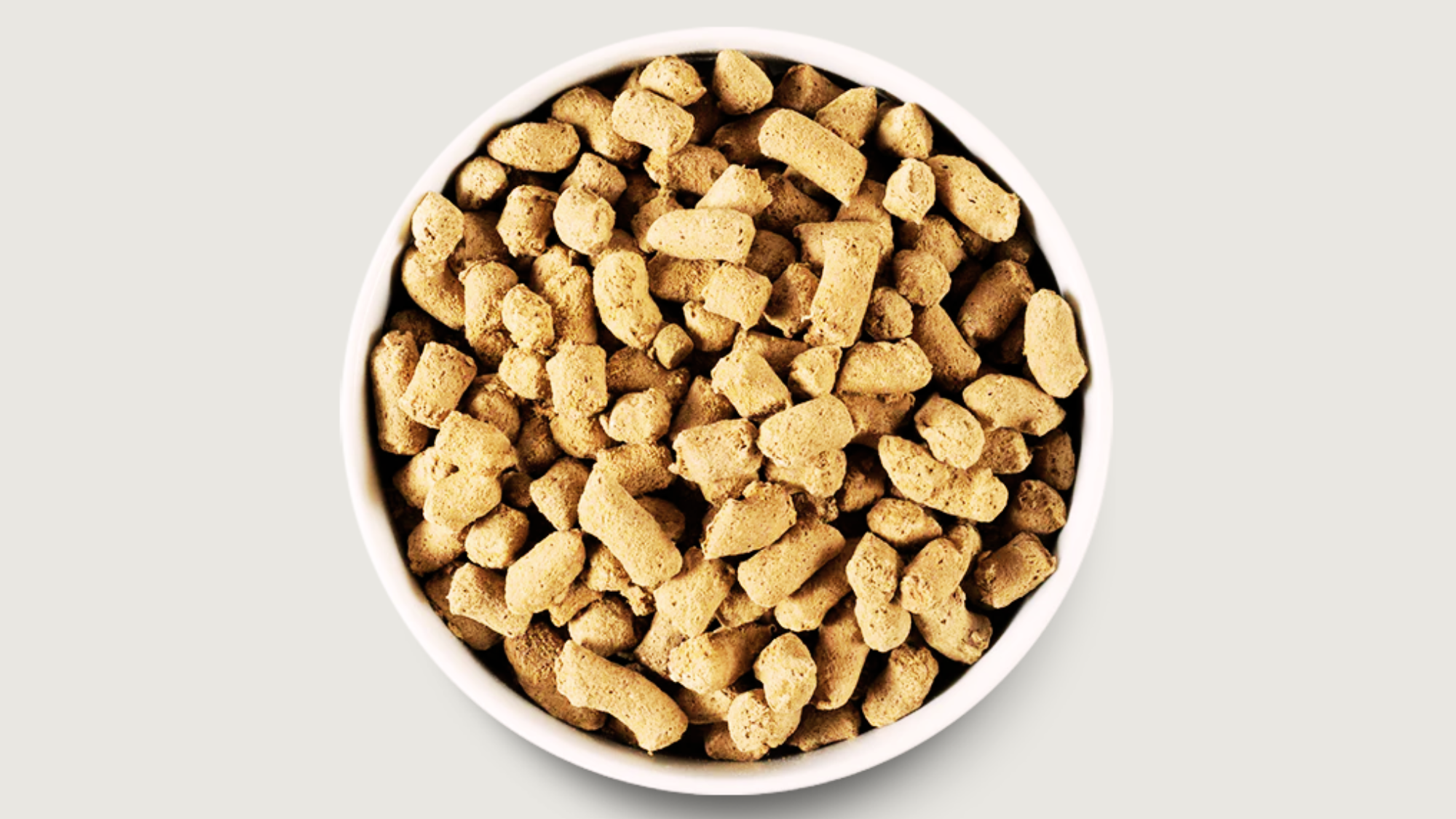| Summary: Freeze-dried raw dog food is nutrient-rich, shelf-stable, and highly digestible, offering benefits like improved skin, coat, and gut health. However, it’s costly, requires rehydration, and may not suit all dogs. It’s ideal for active dogs but may be impractical for budget-conscious owners. Consider partial feeding to balance cost. |
Freeze-dried raw dog food has gained popularity among pet owners looking for a nutrient-dense, high-protein diet that mimics what dogs would eat in the wild. The freeze-drying process preserves essential nutrients while removing moisture, making the food shelf-stable and convenient. However, despite its advantages, it may not be suitable for every dog. I’ll explore the freeze-dried raw dog food pros and cons, using fact-based insights, numeric values, and clear comparisons to help you determine if it’s the right choice for your pet.
To discover what activities bring joy to Australian Cattle Dogs, check out this detailed guide on What Do Australian Cattle Dogs Love.
Blog Highlights
ToggleQuick Fix FAQ Guide:
| Question | Quick Answer |
| Is freeze-dried raw food better than kibble? | Yes, it has higher protein, fewer carbs, and better digestibility. |
| Does freeze-dried raw food need rehydration? | Yes, add warm water and let sit for 2-5 minutes. |
| How long does it last? | 12-24 months if stored properly. |
| Is it safe from bacteria? | Yes, the freeze-drying process kills 99% of bacteria. |
| Is it expensive? | Yes, costs $30-$50 per pound, significantly more than kibble. |
| Can all dogs eat it? | No, not ideal for puppies under 8 weeks or dogs with kidney issues. |
| How do I transition my dog? | Gradually mix with current food over 7-10 days. |
| Does it help with allergies? | Yes, it’s free from fillers and artificial additives. |
| How do I store it? | Keep in an airtight container in a cool, dry place. |
| Can I mix it with kibble? | Yes, mixing reduces cost while adding health benefits. |
What Is Freeze-Dried Raw Dog Food?
Freeze-dried raw dog food is made by freezing raw ingredients and then slowly removing the moisture through a vacuum-sealing process. This preserves the nutritional integrity of the food without using high heat, which can destroy essential vitamins and minerals. The result is a lightweight, long-lasting product that retains its original texture and taste when rehydrated.
To find the ideal collar size for your Australian Cattle Dog, check out this guide on What Size Collar for Australian Cattle Dog for helpful tips on measurement and fit recommendations.
Key Features of Freeze-Dried Raw Dog Food
✔ Made from 85-98% real meat, organs, and bones
✔ Contains 0-15% vegetables, fruits, and natural supplements
✔ No artificial preservatives or fillers
✔ Long shelf life – typically 12-24 months without refrigeration
✔ Requires rehydration with water before feeding
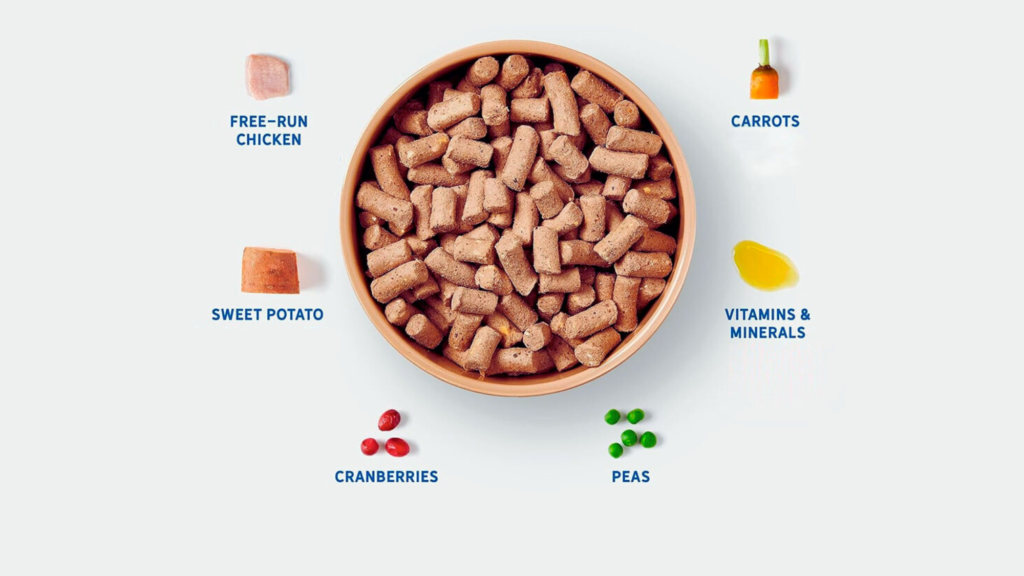
Freeze-Dried Raw Dog Food Pros and Cons
Now, let’s break down the freeze-dried raw dog food pros and cons based on scientific data, expert insights, and real-world usage.
Pros of Freeze-Dried Raw Dog Food
1. Superior Nutritional Value
➤ High Protein Content – Most freeze-dried raw diets contain 35-50% crude protein, compared to 18-26% in traditional kibble. This helps maintain muscle mass, supports energy levels, and improves overall health.
➤ Rich in Natural Enzymes & Amino Acids – Since the food is not exposed to high heat, essential enzymes and amino acids remain intact, supporting digestion and cellular function.
➤ Better Omega-3 to Omega-6 Ratio – Freeze-dried raw food has a 2:1 to 5:1 omega-3 to omega-6 ratio, compared to kibble, which often has an excess of omega-6 (10:1 or higher), leading to inflammation and skin problems.
2. Improved Digestibility & Gut Health
➤ Higher Digestibility – Dogs digest freeze-dried raw food at 80-95% efficiency, compared to 65-75% for kibble. This means they absorb more nutrients and produce smaller, firmer stools.
➤ Low Carbohydrate Load – Most freeze-dried formulas contain 5-15% carbohydrates, compared to 40-60% in kibble, making them ideal for dogs prone to obesity, diabetes, or grain allergies.
➤ Supports a Healthy Gut Microbiome – Many freeze-dried formulas include probiotics (2-5 million CFUs per serving), which help balance gut bacteria and improve digestion.
3. Convenient Storage & Long Shelf Life
➤ No Refrigeration Needed – Unlike fresh raw food, which must be stored at 0-4°C (32-39°F), freeze-dried food stays shelf-stable at room temperature for 12-24 months.
➤ Lightweight & Portable – A 16-ounce bag of freeze-dried food is equivalent to 4 pounds of fresh raw food, making it easy to store and transport.
➤ Quick & Easy Preparation – Just add warm water (4-8 ounces per cup of food), wait 2-5 minutes, and it’s ready to serve.
4. Reduced Risk of Bacterial Contamination
➤ Kills 99% of Harmful Bacteria – The freeze-drying process removes moisture, making it difficult for bacteria like Salmonella, Listeria, and E. coli to survive.
➤ Safer Than Fresh Raw Diets – A study found that freeze-dried raw food had 80% fewer bacterial contaminants than fresh raw diets, making it a safer option for both pets and owners.
5. Supports Healthier Skin, Coat, & Joints
➤ Essential Fatty Acids (Omega-3 & Omega-6) – Helps maintain a shiny coat, reduces shedding, and prevents dry skin.
➤ Glucosamine & Chondroitin (500-1500 mg/kg) – Many formulas support joint health, making them great for senior dogs or breeds prone to arthritis.
➤ No Artificial Fillers or Preservatives – Many commercial dog foods contain synthetic additives, but freeze-dried food remains free of BHA, BHT, and ethoxyquin, which are linked to cancer and organ damage.
Find out what color collar looks best on a Rottweiler to complement their bold appearance and highlight their unique features.
Cons of Freeze-Dried Raw Dog Food
1. Higher Cost Compared to Kibble & Canned Food
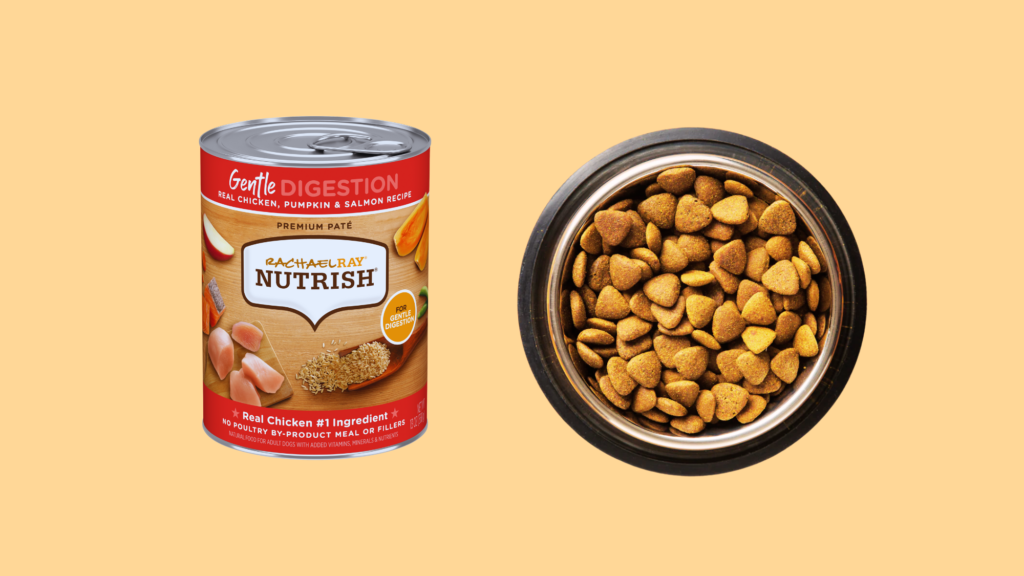
➤ Price Per Pound – Freeze-dried raw food costs $30-$50 per pound, compared to $2-$5 per pound for kibble and $3-$6 per pound for canned food.
➤ Monthly Cost – Feeding a 50-pound dog a freeze-dried diet costs $200-$400 per month, compared to $50-$100 for kibble.
➤ Budget-Friendly Tip – Mixing freeze-dried food with kibble or homemade meals can reduce costs while maintaining health benefits.
2. Requires Rehydration & Time for Preparation
➤ Water Requirement – Most freeze-dried foods need 3-4 ounces of water per 1 ounce of dry food, requiring extra preparation.
➤ Rehydration Time – Typically 2-5 minutes, which may be inconvenient for busy owners.
➤ Risk of Dehydration – If served dry, it can absorb water from the dog’s body, increasing the risk of dehydration, especially in older dogs.
3. Not Ideal for All Dogs
➤ Puppies Under 8 Weeks – Their digestive systems are still developing and may struggle with high protein content.

➤ Dogs with Kidney or Liver Disease – High protein levels (35-50%) may worsen kidney or liver conditions.
➤ Overweight Dogs – Some freeze-dried foods contain up to 40% fat, which can lead to weight gain if not portion-controlled.
4. Limited Availability & Brand Variability
➤ Fewer Brands & Flavors – Compared to kibble, fewer brands offer freeze-dried options, limiting variety.
➤ Inconsistent Quality – Some brands use low-quality meat by-products, so it’s crucial to check ingredient labels carefully.
Learn what size collar for a Rottweiler is ideal by following this detailed guide to ensure a perfect fit for your dog’s comfort and safety.
Table of Comparison: Freeze-Dried Raw Food vs. Other Dog Foods
| Feature | Freeze-Dried Raw | Kibble | Canned Food | Fresh Raw Diet |
| Protein Content | 35-50% | 18-26% | 25-40% | 40-60% |
| Fat Content | 15-40% | 8-20% | 10-25% | 20-45% |
| Carbohydrates | 5-15% | 40-60% | 10-30% | 0-10% |
| Shelf Life | 12-24 months | 12-18 months | 2-3 years (unopened) | 2-3 days (refrigerated) |
| Rehydration Needed? | Yes, 2-5 minutes | No | No | No |
| Digestibility | 80-95% | 65-75% | 70-85% | 90-98% |
| Storage Requirement | Room temperature | Room temperature | Refrigeration after opening | Freezer/refrigeration |
| Price per Pound | $30-$50 | $2-$5 | $3-$6 | $5-$12 |
| Feeding Cost (50 lbs dog) | $200-$400/month | $50-$100/month | $80-$150/month | $200-$500/month |
| Bacterial Risk | Very Low | Low | Low | High |
| Ease of Feeding | Moderate (needs prep) | High (ready to serve) | High (ready to serve) | Low (needs handling) |
How to Transition Your Dog to Freeze-Dried Raw Food (Step-by-Step Guide)
Transitioning your dog to freeze-dried raw food requires gradual adjustment to prevent digestive upset. Switching too quickly can cause diarrhea, vomiting, or loss of appetite. Follow this structured plan for a smooth transition:
Step 1: Choose the Right Brand and Formula
✔ Look for a high-quality freeze-dried raw brand with 85-98% meat content.
✔ Avoid formulas with artificial preservatives, fillers, or excessive plant ingredients.
✔ Consider your dog’s specific dietary needs – choose lower-fat options (15-20%) for overweight dogs and higher-fat options (30-40%) for active or working dogs.
Step 2: Determine the Proper Feeding Amount
✔ The general guideline for freeze-dried raw feeding is 2-3% of your dog’s body weight per day.
✔ A 50-pound dog needs approximately 1.5 to 2.5 cups of freeze-dried raw food daily.
✔ If feeding dry, increase water intake to prevent dehydration.
✔ Puppies, pregnant, or lactating dogs may require 5-6% of their body weight in food.
Step 3: Gradual Transition Plan (7-10 Days)
| Day | Current Food | Freeze-Dried Raw |
| Days 1-2 | 75% current food | 25% freeze-dried |
| Days 3-4 | 50% current food | 50% freeze-dried |
| Days 5-6 | 25% current food | 75% freeze-dried |
| Days 7-10 | 100% freeze-dried | – |
✔ If your dog shows signs of digestive upset (soft stools, gas, vomiting), slow down the transition.
✔ Keep plenty of fresh water available at all times.
Step 4: Monitor Your Dog’s Health & Adjust
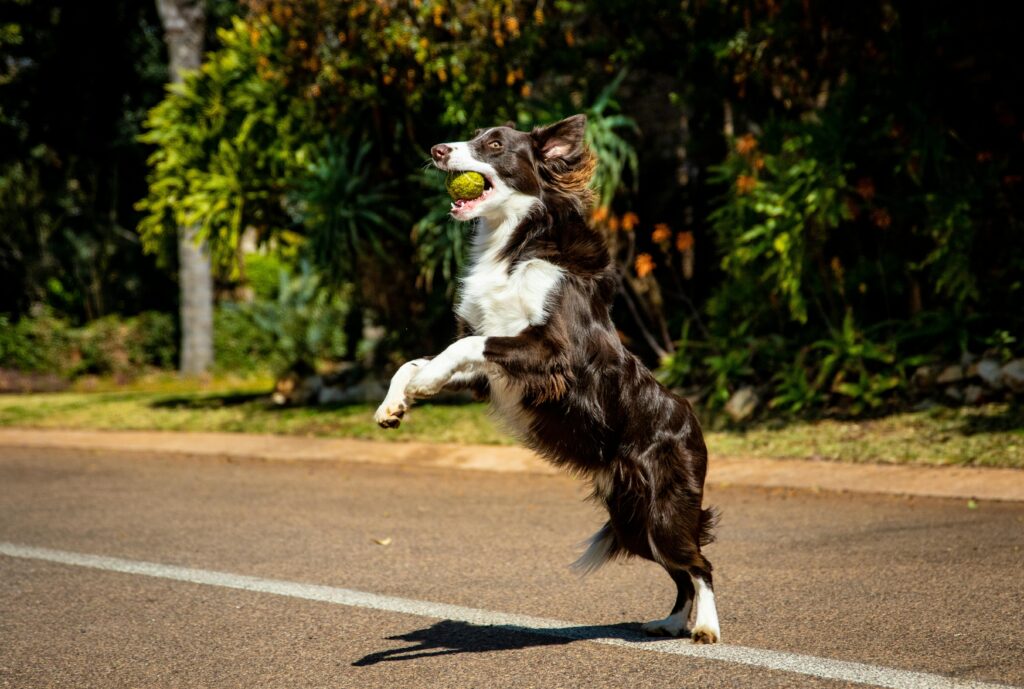
✔ Signs of a successful transition: Increased energy, shinier coat, firmer stools, and better digestion.
✔ If your dog experiences persistent diarrhea, vomiting, or food refusal, consult a vet.
✔ Adjust portion sizes based on weight, activity level, and metabolism.
Step 5: Storing and Handling Freeze-Dried Raw Food
✔ Store in an airtight container to maintain freshness.
✔ Avoid exposing food to humidity or moisture, as this can lead to spoilage.
✔ Keep in a cool, dry place (ideal temperature: 50-70°F).
✔ Once rehydrated, use within 2 hours or refrigerate and consume within 24 hours.
You can learn whether Dachshunds need special collars and find expert recommendations in this article: Do Dachshunds Need Special Collars.
Best Way to Use Freeze-Dried Raw Dog Food
If you decide to feed freeze-dried raw food, follow these best practices:
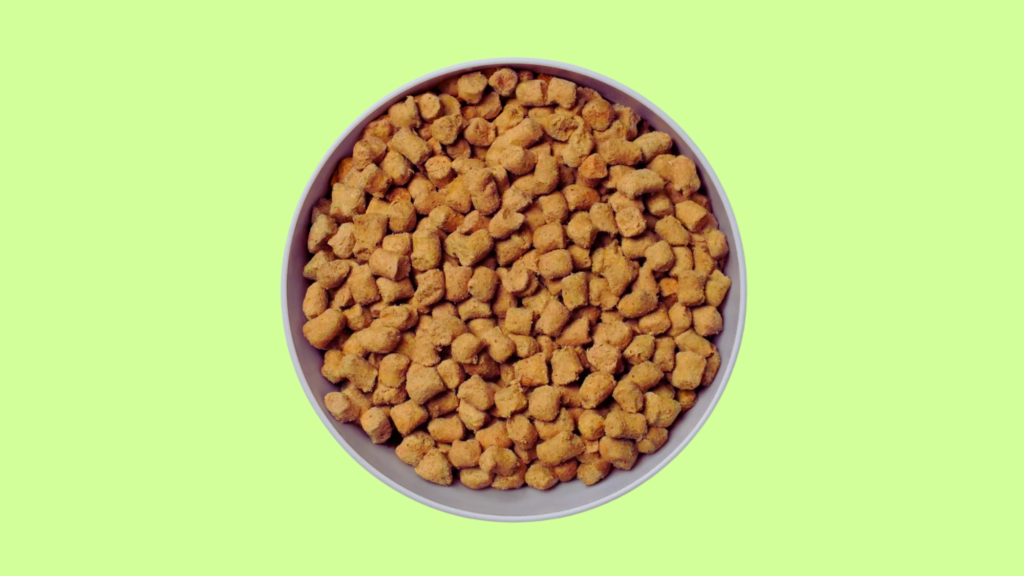
✔ Determine Portion Size – A 50-pound dog typically requires 1.5 to 2.5 cups per day (varies by brand).
✔ Rehydrate Properly – Use warm water (not hot) and allow 2-5 minutes to soften.
✔ Mix with Other Foods – To save costs, use 50% freeze-dried and 50% kibble.
✔ Store Correctly – Keep in an airtight container at room temperature to prevent moisture buildup.
✔ Consult a Vet – Especially for puppies, senior dogs, or those with health conditions.
Final Verdict: Is Freeze-Dried Raw Dog Food Worth It?
✔ Best for Active, Healthy Dogs – Ideal for high-energy dogs that need extra protein and nutrients.
✔ Great for Dogs with Food Sensitivities – No artificial additives, making it perfect for dogs with allergies.
✔ Convenient & Long-Lasting – Excellent alternative to fresh raw diets with easier storage.
✖ Not Ideal for Budget-Conscious Owners – High costs make it impractical for large dogs or multi-dog households.
✖ Requires Rehydration – Not as convenient as kibble or canned food.
We hope it’s clear: The freeze-dried raw dog food pros and cons. If nutrition, digestibility, and health benefits are your top priorities, freeze-dried raw food is a fantastic choice. However, if budget and convenience matter more, consider using it as a supplement rather than a full diet.
To decide whether a collar or harness is best for your Dachshund, check out this helpful guide: What is Best for Dachshund Collar or Harness.

